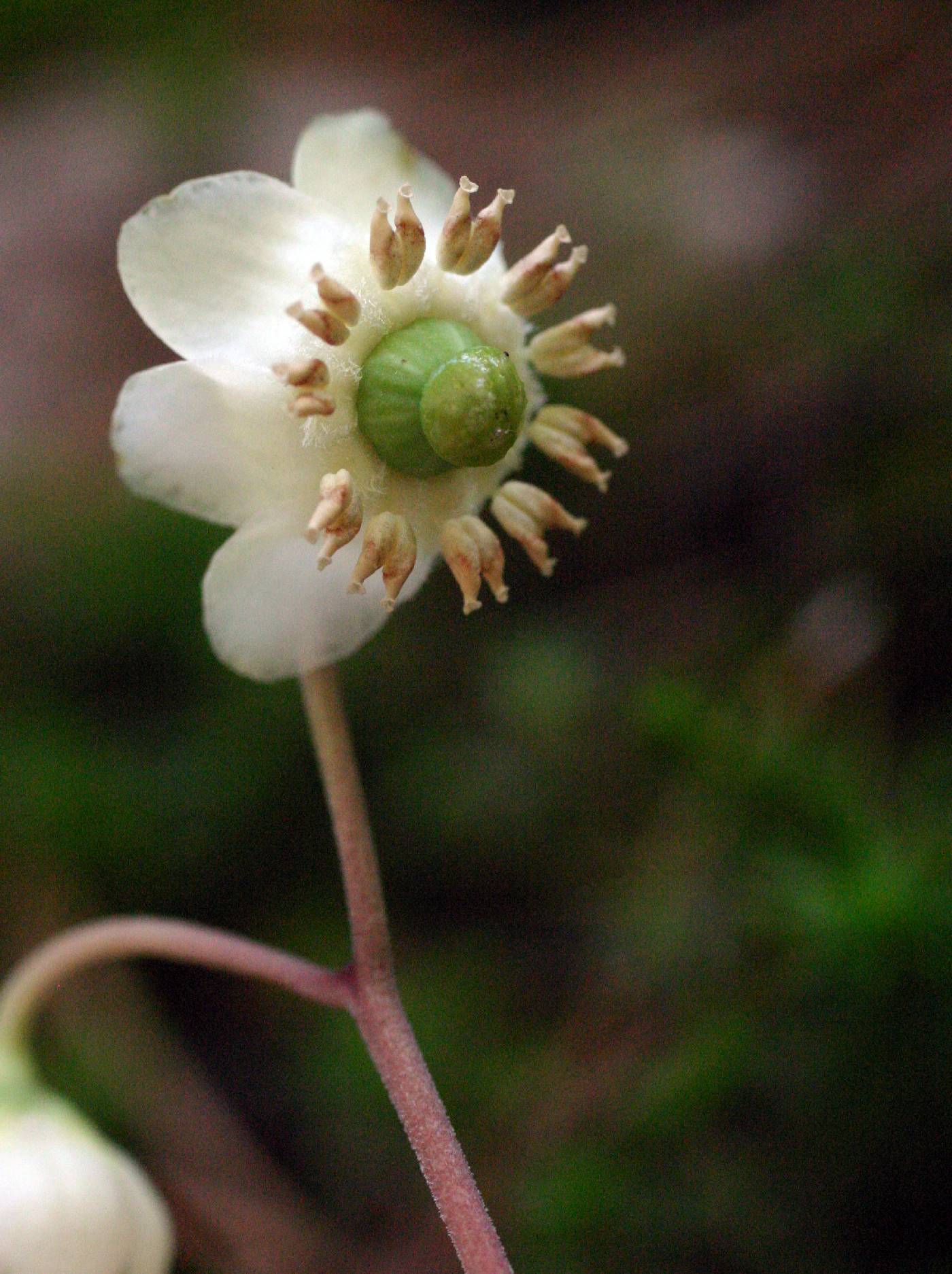
|
Family: Ericaceae |
Subshrubs, chlorophyllous, autotrophic. Stems erect, rarely decumbent, glabrous or papillose to hispidulous, especially distally. Leaves cauline, alternate or pseudoverticillate in 2-5(-6) whorls; petiole present; blade maculate or not, lanceolate, elliptic-lanceolate, ovate-lanceolate, oblong-lanceolate, ovate, lanceolate-oblong, oblanceolate, elliptic, or spatulate, coriaceous, margins entire, serrulate, serrate, or crenate-serrate, revolute, surfaces glabrous or papillose. Inflorescences corymbs or subumbels, rarely solitary flowers, not lax in bud or flower, erect in fruit, (symmetric); peduncular bracts absent; inflorescence bracts adnate to pedicels, sometimes scarcely so. Pedicels erect in fruit, (glabrous or papillose to hispidulous); bracteoles absent. Flowers radially symmetric, nodding or spreading; sepals 5, connate proximally, often obscurely so, calyx lobes ovate, broadly ovate, or suborbiculate; petals 5, distinct, white, pink, or rose, often tinged violet, without basal tubercles, (surfaces glabrous), corolla rotate to crateriform or broadly crateriform; intrastaminal nectary disc present; stamens 10, included; filaments broad proximally, abruptly narrowed medially, slender distally, dilated basal portions ciliate or villous to densely villous; anthers oblong, without awns, with tubules, dehiscent by 2 crescent-shaped to round pores; pistil 5-carpellate; ovary imperfectly 5-locular; placentation intruded-parietal; style (included), straight, expanded distally; stigma entire or obscurely 5-ridged, without subtending ring of hairs. Fruits capsular, erect, dehiscence loculicidal, no cobwebby tissue exposed by splitting valves at dehiscence. Seeds ca. 1000, fusiform, winged. x = 13. Ethnobotanical studies have documented a wide variety of drug and food uses of Chimaphila among more than two dozen tribes of Native Americans (D. E. Moerman 1998; K. Sheth et al. 1967).
PLANTS: Rhizomatous evergreen sub-shrubs with shoots topped by a few-flowered corymb or umbel. LEAF: blades lanceolate to oblanceolate, leathery; teeth generally prominent; petioles shorter than blade. FLOWERS: actinomorphic, drooping; petals without basal tubercles, spreading, waxy; filaments dilated and hairy; anthers with tubes and pores; pollen grains single, spherical, released in clumps; disk present; style short straight; stigma broadly peltate, the lobes 5, flattened, radiate. FRUITS: erect capsules, without fibers connecting opened valves. NOTES: 4-5 spp.; world-wide in Northern Hemisphere. (Greek: cheima = winter + philein = to love, perhaps because of the evergreen habit). REFERENCES: Haber, Erich. 1992. Pyrolaceae. Ariz.-Nev. Acad. Sci. 26(1)2. Pet 5, spreading; filaments strongly dilated below the slender tip; anthers plump, the pollen-sacs flattened-oblong, attached at the middle, rounded at the base, connate below the filament, separate and tapering above, opening by a wide terminal pore; style very short, nearly immersed in the depressed top of the ovary; capsule depressed- globose, loculicidal from the top down; low, perennial, evergreen half-shrubs from a creeping rhizome, with thickish, denticulate, opposite or often subverticillate, wholly cauline lvs and terminal, long-peduncled, few-fld umbels or corymbs of white or pink fls. 4-5/N. Hemisphere. Gleason, Henry A. & Cronquist, Arthur J. 1991. Manual of vascular plants of northeastern United States and adjacent Canada. lxxv + 910 pp. ©The New York Botanical Garden. All rights reserved. Used by permission. |
This project was made possible in part by the Institute of Museum and Library Services [MG-70-19-0057-19].
Powered by Symbiota



